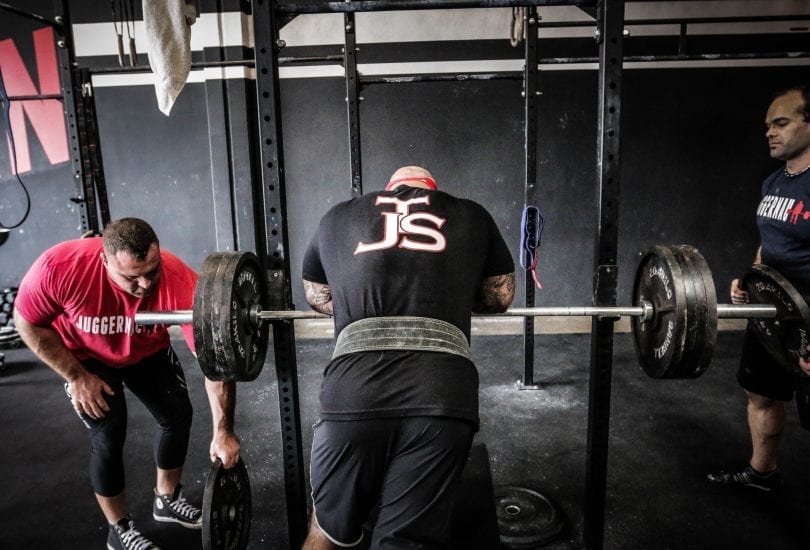Written by Greg Robins
When developing a plan for your athletes there are many variables that must be considered, and managed. While the majority of coaches, and articles stress variables such as intensity, volume, and various periodization schemes there is one variable that is often undervalued – exercise selection.
While my time at Cressey Performance has taught me many lessons, there is one in particular I have come value more and more. This lesson is what I want to focus this article on, and how I have come to approach programming for the athletes and clients I evaluate and in turn, program for. It is tough for me to put a token sentence on this lesson, as it is more of a process. A process that will ultimately lead you to see the overwhelming value that must be placed on exercise selection.
It starts with learning how to prioritize what a person needs most.
Team sports athletes want to excel at their chosen sport. General clientele may want to focus on a host of other goals such as strength increase, muscle development, fat loss, or a combination of all of these. In reality the only people whose goals center around mastering and increasing certain lifts are strength sport athletes and / or people with that specific goal.
Team sport athletes do not need to back squat, deadlift and bench press. I am obviously a huge fan of these lifts, but I understand they aren’t the end all to be all. This is especially true with populations who don’t train to perform these lifts competitively. Furthermore, elaborate training schemes are relatively useless when the movements chosen don’t fit the person, and as a result lead to injury or flawed movement.
The last thing you want to do is have someone get hurt training. The close second to that is allowing athletes to perform lifts that continue to build higher levels of strength on top of their dysfunctional movement patterns.
I struggle to see the value in worrying about how elaborate training schemes centered on things like energy systems, tempos, sequenced periodization, etc., matter if the person moves like absolute crap. Coaches, who place all their energy on developing programs that look great on paper, using complex strategies, and dismissing exercise selection in relation to the person performing the movements, are missing the boat.
Using a complex training strategy with isometrics, contrast sets, and so forth just has you spinning your wheels if the athlete comes out of the program still flawed in how they move.
For example, if the athlete has a flaw in their posture and movement pattern and you assign them exercises that they physically can’t perform correctly then your well-supported training strategies don’t matter. At the end of the day they still move incorrectly, are inefficient, and are more likely to get hurt.
We have athletes come from all over the country. Some that train under some of the brightest minds in collegiate strength and conditioning. That being said, I am always surprised to see how poorly they move. How is this possible?
Unfortunately, they are plugged into a training system that doesn’t fit them. Furthermore, little importance is placed on their technique, or their movement quality in general.
The program is solid. In fact, it’s probably better than solid. It is top tier. If they were great movers the program would elevate their performance to a whole new level. The fact is, the majority (of even the best athletes) is fundamentally flawed in how they move. Their sports, and countless hours playing them, has led to certain adaptations which will lead to injury if not managed appropriately.
This is where you can make a huge difference in their career. Assess the athlete, and prescribe exercises that they can perform correctly. Do not just prescribe a training program designed to elevate certain performance marks without first making sure they are quality movers. When you do, you just end up super charging a faulty machine.
The take away is that while on paper a squat is the appropriate exercise for the scheme, some guys may need to vary how they perform the lift depending on how they’re built. Additionally, for some athletes a squat isn’t the right choice at all. They would be better served performing another lift altogether. Moreover, if you take the time to consider exercise selection you will make a better choice that elicits just as much production.
Don’t devalue exercise selection. Prioritize certain qualities in the correct order.
Movement quality is first, which means exercise choice is of paramount importance. Once they move well, then you can move them more aggressively.
Greg Robins is a Strength and Conditioning Specialist at Cressey Performance in Hudson, MA. Greg has worked with clientele ranging from general population to professional athletes. His unique experience in many different aspects of fitness, strength training, and athletic preparation have helped him become an unbiased authority on all things fitness and performance related. Outside of coaching Greg is a former collegiate baseball player, active member of the MA ARMY National Guard, and enjoys power lifting. Website, Facebook, YouTube, Twitter






